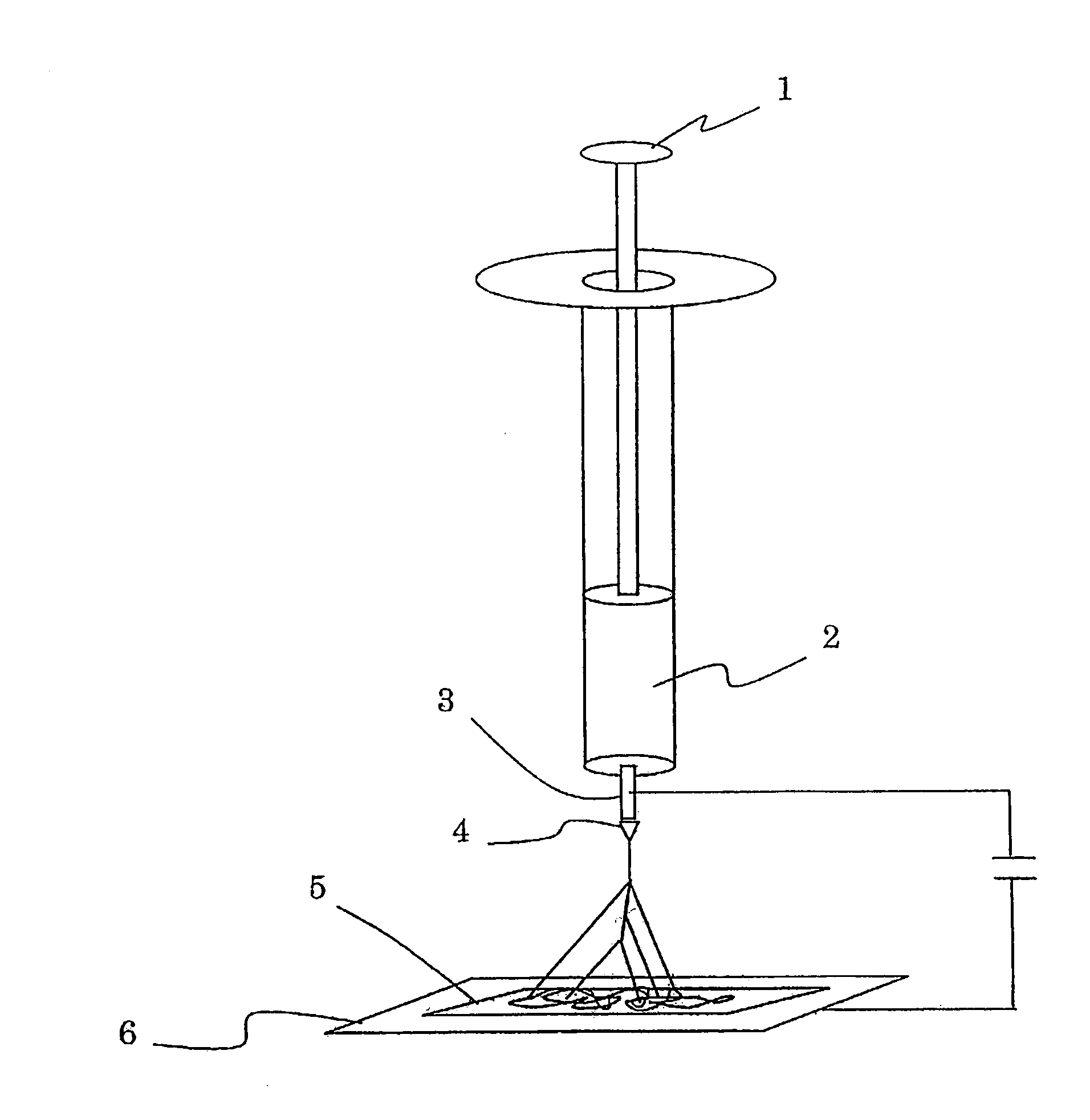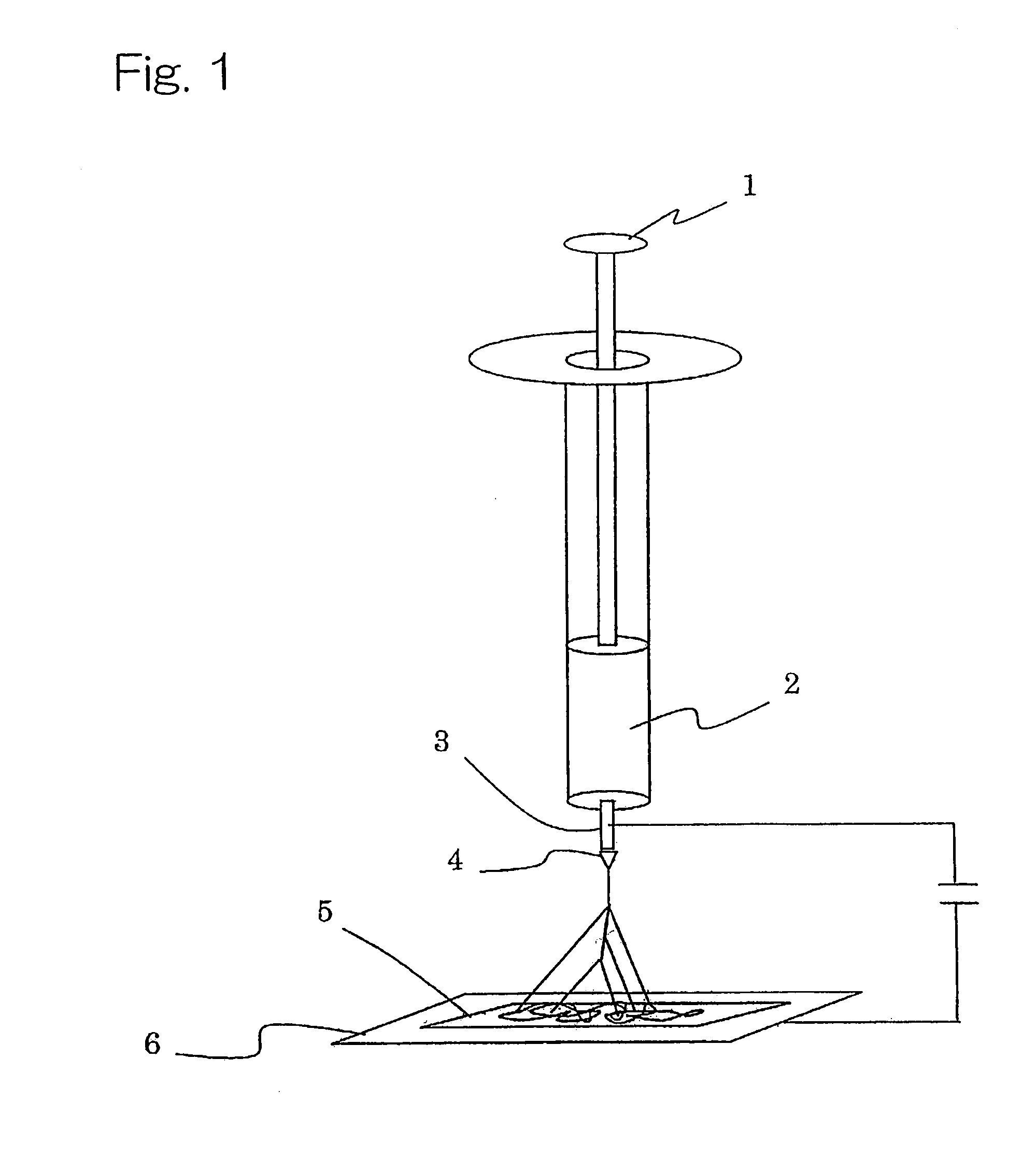Separator for alkaline battery, method for producing the same, and battery
- Summary
- Abstract
- Description
- Claims
- Application Information
AI Technical Summary
Benefits of technology
Problems solved by technology
Method used
Image
Examples
example 1
[0116](1) First, as a raw material, were mixed 35 mass % of a PVA main fiber (“VPB103×3” manufactured by Kuraray Co., Ltd.; 1.1 dtex×3 mm), 15 mass % of a PVA binder fiber (“VPB105-1” manufactured by Kuraray Co., Ltd.; 1.1 dtex×3 mm, having a water dissolution temperature of 70° C.), and 50 mass % of an organic solvent-spun rayon fiber (“Tencel” (trademark) manufactured by Lenzing; 1.7 dtex×2 mm, refined to have a CSF value of 300 mL with a high-speed refining machine), then the resultant mixture was wetlaid with a Fourdrinier machine, subsequently the resultant undried nonwoven material was dried with a Yankee drier to obtain a wet-type nonwoven base layer having a basis weight of 22.9 g / m2, and a thickness of 0.10 mm.
[0117](2) Second, in order to form a nanofiber layer, a modified PVA polymer (“KM-118” manufactured by Kuraray Co., Ltd., polymerization degree of 1780, saponification value of 98 mol %, modified with 2 mol % of maleic acid) was added into water in the concentration o...
example 2
[0121]Except that the concentration of the spinning solution of the PVA polymer for the nanofiber was changed into 11 mass % (surface tension of 48.9 dyne / cm), and the distance between the nozzle 3 and the earthed conductive member 6 (i.e., the distance between the conductive materials) was changed into 7 cm in FIG. 1, a composite sheet and a battery were obtained in the same way with those of Example 1. In thus obtained composite sheet, the nanofiber layer had larger fiber diameter, and slightly lower property than Example 1. However, the battery still showed enhanced battery performance. The properties of the composite sheet and the evaluation results of the battery performances are shown in Table 1.
example 3
[0122]Except that the concentration of the spinning solution of the PVA polymer for the nanofiber was changed into 6 mass % (surface tension of 47.4 dyne / cm), and the distance between the nozzle 3 and the earthed conductive member 6 (i.e., the distance between the conductive materials) was changed into 7 cm in FIG. 1, a composite sheet and a battery were obtained in the same way with those of Example 1. In thus obtained composite sheet, the nanofiber layer attained higher absorption of electrolyte and effective blocking because of finer and more tangled structure of the nanofiber layer than that of Example 1. Further, the battery had sufficient and enhanced discharge performance required for the battery. The properties of the composite sheet and the results of evaluation of the battery performances are shown in Table 1.
PUM
| Property | Measurement | Unit |
|---|---|---|
| Fraction | aaaaa | aaaaa |
| Fraction | aaaaa | aaaaa |
| Thickness | aaaaa | aaaaa |
Abstract
Description
Claims
Application Information
 Login to View More
Login to View More - R&D
- Intellectual Property
- Life Sciences
- Materials
- Tech Scout
- Unparalleled Data Quality
- Higher Quality Content
- 60% Fewer Hallucinations
Browse by: Latest US Patents, China's latest patents, Technical Efficacy Thesaurus, Application Domain, Technology Topic, Popular Technical Reports.
© 2025 PatSnap. All rights reserved.Legal|Privacy policy|Modern Slavery Act Transparency Statement|Sitemap|About US| Contact US: help@patsnap.com


